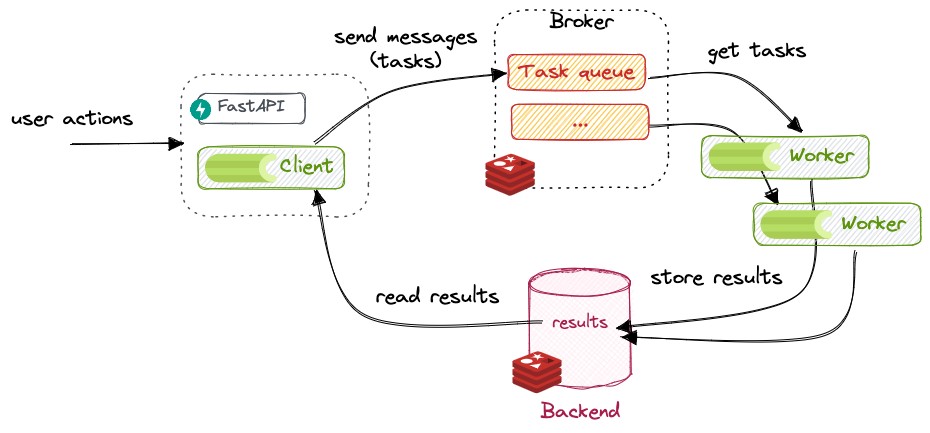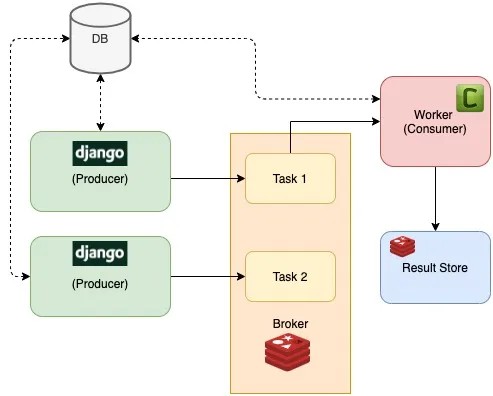README.md 2.2 KB
Redis-Celery (Distributed Architecture)
This includes
- Redis
- Flower
Usage (docker-compose)
start the system
add ``` -d ``` run in background * down the system ctrl-c ordocker-compose down ```
Celery
Celery Documentation
Flower Documentation
install "celery"
### Starting the worker
shell celery -A proj worker
#### Options
Worker Options:
* -n, --hostname HOSTNAME Set custom hostname (e.g., 'w1@%%h').
Expands: %%h (hostname), %%n (name) and %%d, (domain).
* -D, --detach Start worker as a background process.
* -S, --statedb PATH Path to the state database. The extension
'.db' may be appended to the filename.
* -l, --loglevel [DEBUG|INFO|WARNING|ERROR|CRITICAL|FATAL]
Logging level.
* -O, --optimization [default|fair]
Apply optimization profile.
* --prefetch-multiplier <prefetch multiplier>
Set custom prefetch multiplier value for
this worker instance.
Pool Options:
* -c, --concurrency <concurrency>
Number of child processes processing the
queue. The default is the number of CPUs
available on your system.
celery worker --help ``` can get more infomation.
woker in Windows
add --pool=solo option
Calling the task
>>> from tasks import add
>>> add.hello()
If your celery app set rsult backend
>>> from tasks import add
>>> result = add.hello()
The ready() method returns whether the task has finished processing or not:
>>> result.ready()
>>> False
You can wait for the result to complete, but this is rarely used since it turns the asynchronous call into a synchronous one:
>>> result.get(timeout=1)
>>> 'hello world'

